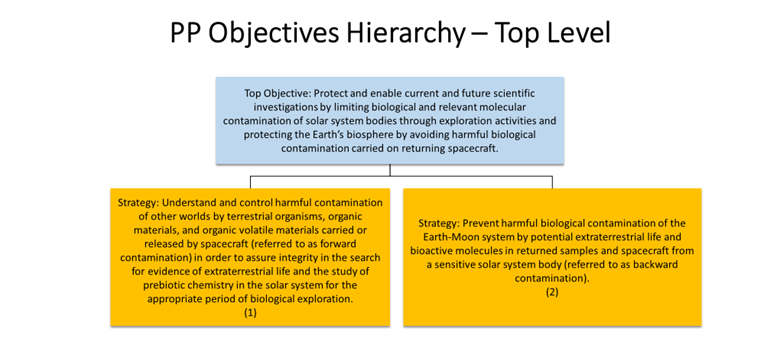NASA Releases New Planetary Protection Standard
August 31, 2022
2-minute read

NASA’s Office of Safety and Mission Assurance released NASA-STD-8719.27, Planetary Protection Standard, effective Aug. 30, 2022. The standard is a follow-on document complementing NPR 8715.24, Planetary Protection Provisions for Robotic Extraterrestrial Missions. It addresses and is relevant to both crewed and robotic missions and covers the technical details a mission should consider for the design and execution of the Planetary Protection mission throughout the project life cycle. It is relevant starting in the Mission Concept Review and System Requirements Review phase by defining the Planetary Protection categorization to end-of-mission disposal reporting.
“The Office of Planetary Protection is excited to have this standard published, as it closes the policy gap since the cancelation of NPR 8020.12D, Planetary Protection Provisions for Robotic Extraterrestrial and NID 8020.109A, of the same name,” said Nick Benardini, Planetary Protection Officer. “This standard represents over two-and-a-half years of drafting and extensive agency review and revision prior to this release.”

NASA-STD-8719.27 provides technical requirements to protect and enable current and future scientific investigations by limiting biological and relevant molecular contamination of solar system bodies through exploration activities and protecting the Earth’s biosphere by avoiding harmful biological contamination carried on returning spacecraft. The main strategy to address forward Planetary Protection is to understand and control harmful contamination of other worlds by terrestrial organisms, organic materials and organic volatile materials carried or released by spacecraft (referred to as forward contamination) in order to assure integrity in the search for evidence of extraterrestrial life and the study of prebiotic chemistry in the solar system for the appropriate period of biological exploration. The main strategy to address backward Planetary Protection is to prevent harmful biological contamination of the Earth-Moon system by potential extraterrestrial life and bioactive molecules in returned samples and spacecraft from a sensitive solar system body (referred to as backward contamination).
“The standard identifies both the traditional prescriptive-based standards that have been used for decades — such as spore-based metrics — as well as options for leveraging performance-based approaches using scientifically sound, transparent and safety-responsible solutions,” said Benardini. “It also identifies relevant industrial standards in addition to NASA unique approaches.”
In addition, the standard provides technical requirements and captures the NASA Standard Spore Assay as a biological contamination assessment standard.
The Office of Planetary Protection is now working to add a NASA handbook to the suite of Planetary Protection policy and guidance; it will include guidance on implementing the “how-to” for this new standard.